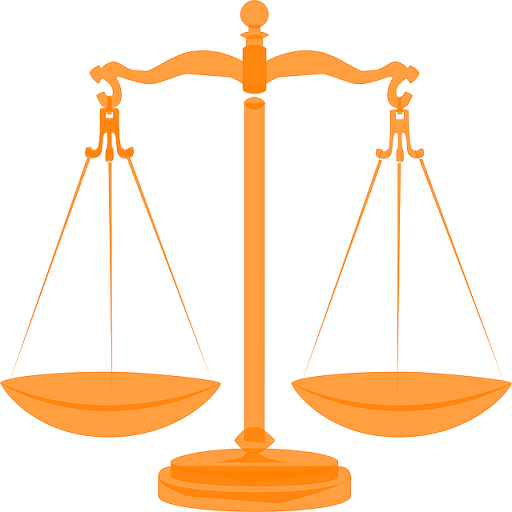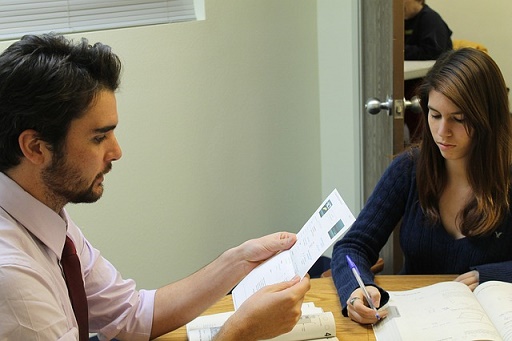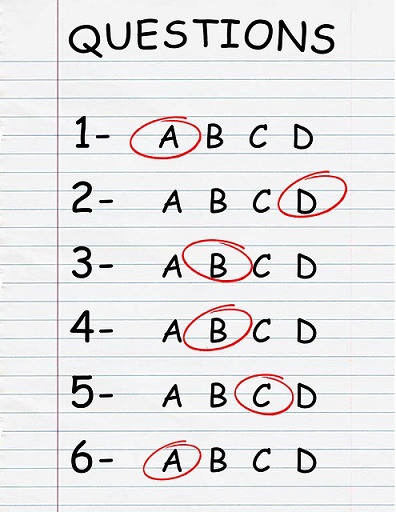
If you need to take an exam to prove your English language skills, the TOEFL and IELTS are two of the most popular options out there. But should you take TOEFL or IELTS? What is each test like? Do schools prefer one exam over the other? Which one will you get a higher score on?
Read this guide for a full breakdown of TOEFL vs. IELTS and answers to all these questions!
To answer the IELTS vs. TOEFL question, we first have to discuss each of the tests.
Introduction to the TOEFL
The TOEFL (Test of English as a Foreign Language) is an English language proficiency exam produced by the ETS, the same organization that develops the GRE (an exam for grad school admissions) and several other tests.
There are several versions of the TOEFL, either paper-based or computer-based. This guide will focus on the TOEFL iBT which is administered over the internet. The TOEFL iBT is, by far, the most commonly taken and accepted version of the TOEFL.
TOEFL Format
The TOEFL lasts a total of 3.5 hours and includes four sections. There is a ten-minute break between the Listening and Speaking sections. For each section, you’ll receive a score of 0-30. These scores are then added together, meaning your total TOEFL score will be from 0-120. Below is the format of the exam.
By the way: we have built the world's best online TOEFL course. Get online practice (TPO-sytle!) and individual grading and feedback on Speaking and Writing.
To be fair, it's possible to get a good TOEFL score studying alone. But PrepScholar is the world's most effective TOEFL course if you are worried about the TOEFL and are struggling to improve your score.
Learn how you can improve your TOEFL score by 15 points today.
| Section | Number of Questions | Time Given |
| Reading | 36-56 | 60-80 minutes |
| Listening | 34-51 | 60-90 minutes |
| Speaking | 6 tasks | 20 minutes |
| Writing | 2 tasks | 50 minutes |
TOEFL Content
As stated above, the TOEFL contains four sections which each test a different area of your English skills. Below is a brief overview of what to expect on each section.
TOEFL Reading
For Reading, there will be three or four passages from academic texts that students must read and answer questions about. The passages are from university-level textbooks that introduce a topic or discipline. There are three types of questions: standard multiple-choice, questions where students must insert a sentence into the proper spot in a paragraph, and questions where students must properly sort information into a chart or summary table.
TOEFL Listening
The Listening section has four to six recordings, each followed by a set of questions. The recordings are similar to conversations students encounter in daily academic life, such as a classroom lecture or a discussion between two students or a student and teacher. Questions will be multiple choice, require you to order steps in an event or process, or require you to match objects or text to categories in a chart.
TOEFL Speaking
The first two tasks are independent speaking tasks that draw on the student’s own ideas, opinions, and experiences when responding.
The remaining four tasks are integrated tasks. Students must use more than one skill when responding to these types of questions.
- Two integrated tasks require students to read, listen, then speak.
- The other two tasks require students to listen then speak.
TOEFL Writing
The Writing section has two tasks: Integrated Writing and Independent Writing. For Integrated Writing, students hear a short recording and read a short passage. They’ll then have 20 minutes to summarize and compare the information they got from these two sources. The suggested response length is 150-225 words.
For Independent Writing, students are given a topic and must give their opinion on that topic. The writing must be clear and supported by examples. Students are given 30 minutes and typically write a minimum of 300 words.

Who Accepts TOEFL Scores
Over 9000 institutions around the world accept TOEFL scores. For schools in the United States, the majority of schools surveyed stated they preferred TOEFL scores over scores of other English-language tests. You can use TOEFL Destination Search to find who accepts TOEFL scores.
Next in our TOEFL vs IELTS discussion, we’ll discuss what the IELTS test is like.
Introduction to the IELTS
The IELTS (International English Language Testing System) is another English language proficiency exam jointly owned by the British Council and IDP: IELTS Australia and Cambridge English Language Assessment.
There are two versions of the IELTS: the IELTS Academic and the IELTS General Training. IELTS Academic is for people applying for higher education or a profession. IELTS General Training is for people traveling to English-speaking countries for secondary education, work experience, or work experience. This guide will focus on IELTS Academic since it is the version for students applying to undergraduate and postgraduate institutions (although the two versions both have the same scoring system and similar formats).
IELTS Format
The total time of the IELTS is 2 hours and 45 minutes. The IELTS has the same four sections as the TOEFL, although the two exams test the sections in different orders. On the IELTS, for each section you’ll receive a score from 0-9. Your overall score is an average of those four scores and will also be from 0-9.
Unlike the TOEFL, which you must take all at once, for the IELTS, you are able to take the Speaking section up to a week before or after the other sections if you prefer (you schedule your Speaking time when you register for the exam).
| Section | Number of Questions | Time Given |
| Listening | 40 | 30 minutes |
| Reading | 40 | 60 minutes |
| Writing | 2 tasks | 60 minutes |
| Speaking | 3 tasks | 11-14 minutes |
IELTS Content
Below, the four sections of the IELTS are discussed in more depth.
IELTS Listening
You’ll hear four recordings (two set in an everyday social context, one set in an educational context, and one that is a university lecture). After each recording there are 10 questions for you to answer. There are several types of questions including multiple choice, matching, diagram labeling, sentence completion, and short answer.
IELTS Reading
For Reading, there are three passages, each followed by about 10-15 questions. The passages are taken from books, journals, magazines, and newspapers. They may have a variety of styles, such as narrative, descriptive, and/or argumentative. At least one will have a detailed logical argument.
Like the Listening section, Reading questions will have a variety of formats including multiple choice, matching, diagram labeling, sentence completion, and short answer.
IELTS Writing
There are two Writing tasks. For Task 1, students must describe a piece of visual information (such as a graph, table, chart, or diagram) in their own words. They will need to write at least 150 words. It’s recommended that students spend 20 minutes on this task.
For Task 2, students are presented with a topic, often a point of view in an argument or discussion. They must write at least 250 words on this topic, in an academic-writing style. It’s recommended they spend 40 minutes on this question. For both tasks, students are tested on how well they respond to the question, the clarity of their writing, range of vocabulary, spelling, and grammar.

Want to improve your TOEFL score? We have the world's leading TOEFL course.
Built by world-class instructors from Harvard and MIT, the course offers individual review, interactive lessons, and realistic online praactice, at an affordable price! It's the fastest way to get your target TOEFL score.IELTS Speaking
For IELTS Speaking, you’ll have an oral interview with an examiner. Your responses will be recorded. This section consists of three parts.
- Part 1: The interviewer will ask the student questions familiar questions about their work, family, studies, and interests.
- Part 2: The interviewer will give the student a card with a topic the student must discuss. The student is given one minute to prepare, must then speak for two minutes, then must answer one or two follow-up questions from the interviewer.
- Part 3: The student and interviewer will continue to discuss the topic presented in part 2 in more depth for four to five minutes.
Who Accepts IELTS Scores
Like the TOEFL, IELTS scores are accepted by over 9,000 institutions worldwide. The IELTS is not taken as often as the TOEFL for students looking to attend grad school in the United States and is more popular overseas, such as in the United Kingdom and Australia, but many American schools still accept TOEFL scores. You can check their website to see who accepts the IELTS.
Below is an overall comparison chart showing some of the key differences between the two exams.
| TOEFL | IELTS | |
| Total Test Time | 3 hours and 30 minutes | 2 hours and 45 minutes |
| Score Range | 0-120 | 0-9 |
| Sections (in order) |
Reading
Listening
Speaking
Writing
|
Listening
Reading
Writing
*Speaking
|
| Numbers of Institutions That Accept These Scores | Over 9,000 | Over 9,000 |
*The Speaking section on the IELTS can be taken before or after the other sections.
TOEFL vs. IELTS: How Can You Decide?
Now you have an overview of what to expect from both IELTS. So which test should you take? Below are four questions you should ask yourself. Think carefully about each question in order to help make your decision.
Which Exam(s) Do the Schools You’re Interested in Accept?
This is the most important consideration because if the schools you’re interested in don’t accept the scores of the test you take, no other factors matter. Both the TOEFL and IELTS are widely accepted at undergraduate and graduate schools around the world.
The TOEFL is more commonly accepted by American institutions, while the IELTS is more commonly accepted overseas, but many schools accept scores from either exam. However, a school may have a preference to which test you take, so that is also worth checking out.
Generally speaking, the majority of United States schools surveyed stated they preferred TOEFL scores over scores of other English-language tests.
Overall, the schools you’re looking at will likely accept scores from either exam, but it’s important to verify this before you choose a test in order to avoid any unpleasant surprises in the future. Both the TOEFL and IELTS make it easy to see which institutions accept their scores.
Which Exam Plays More to Your Strengths?
Both the IELTS and TOEFL test the same major areas, however; the way in which they test you is not exactly the same. Below are five of the most important differences between the TOEFL vs. IELTS. While reading through them, think about if one exam seems better suited to your strengths than the other. If you’re not sure, you can also take a practice test for each exam and see which one you feel more comfortable with.

Difference 1: Multiple-Choice vs. Short Answer
A key difference between the exams is that, for the Reading and Listening sections, you’ll have to write your own answers for many of the questions on the IELTS, while all the answer choices will be given to you on the TOEFL. The TOEFL questions on these sections are not all multiple-choice, but most of them are, and for the ones that aren’t, you won’t have to produce your own answers. On the IELTS, you’ll have to come up with your own answers for many questions.
As an example, both exams have questions where you’ll have to create a properly ordered list of events or steps. On the TOEFL, the steps are already given to you, and you just have to put them in the proper order. For the IELTS, you’ll have to write the steps on your own and properly order them.
If you prefer having more multiple-choice questions or questions where you only have to select an answer from a list of options, you may feel more comfortable with the TOEFL.
Difference 2: Computer-Based vs. Paper-Based
The question of TOEFL vs. IELTS is also a question of computer vs. paper testing.
Almost everyone who takes the TOEFL will do so on the computer. You are allowed to take notes on scratch paper, but all your official answers will be submitted on the computer. The IELTS, on the other hand, is offered either on the computer or with pencil and paper at many test locations.
If you’re faster at typing than writing, have messy handwriting and/or prefer computers over paper tests, you may prefer the TOEFL. If you prefer writing out your answers, feel more uncomfortable with computer-based tests, and/or aren’t as familiar with English language keyboards, you may find the IELTS easier.
Difference 3: Texts Used for the Reading Section
The Reading sections for both the TOEFL and IELTS have several passages, each followed by series of questions. However, the two exams use different types of texts. The IELTS uses academic texts as well as passages from newspapers and magazines. The TOEFL only uses academic texts, which means its reading passages are often denser with more challenging vocabulary and concepts to understand. If you’re not confident with your English reading skills, you may find the IELTS Reading section to be easier.
Difference 4: Computer-Based Speaking vs. Oral Interview
On the TOEFL, the Speaking section, like all other sections of the test, is done over the computer. You’ll hear recorded questions and speak into a microphone to give your answer. With the IELTS, you’ll actually be having a conversation with a real human.
This is one of the biggest differences in the IELTS vs. TOEFL discussion, and it’s an important one to consider. Some people find speaking to a real person more nerve-wracking and would prefer the TOEFL, while others find it easier and more natural to have an actual conversation with a person, rather than speaking into a void for several minutes.
Also, the Speaking section on the TOEFL is always the third part of the exam, while, with the IELTS, you can take this section up to a week before or after the rest of the test. Some people prefer to get the exam over with all in one sitting, while others prefer to break the exam up into more manageable pieces.

Want to improve your TOEFL score by 15 points?
Registration is now open for our best TOEFL course. We guarantee your money back if you don't improve your TOEFL score by 15 points or more.
PrepScholar TOEFL is online and it features thousands of practice questions and 1-on-1 Speaking and Writing review and feedback.
Difference 5: Recommended Essay Lengths
Both exams require you to write two essays for the Writing section. However, IELTS gives you 60 minutes to write a recommended 400 words, while TOEFL only gives you 50 minutes but recommends about 500 words. For both exams, you’ll still be able to submit your essays even if they don’t meet those word counts, but you’ll likely lose points for not having a comprehensive response. If writing in English is a struggle and it takes you a long time, you may find the writing section of IELTS easier since fewer words are expected.
Is One Easier to Get To?
Logistics are also a factor to think about when deciding to take the TOEFL or IELTS. If the testing center for one of the exams is much closer to you and/or one of the exams has a better option of available test dates, that can help you make your decision. Check out the test dates and test locations for the TOEFL or IELTS to learn more.
Is One Cheaper?
Finally, the cost of each test may be another factor you want to consider. Both exams generally cost about $200-$250, but they have different costs depending on the country where you take the exam. It’s worth comparing costs for your country of residence to see if either the IELTS or TOEFL is significantly cheaper. You can check the organizations’ websites to find how much the TOEFL costs and how much the IELTS costs.
Conclusion: IELTS vs. TOEFL
The TOEFL and IELTS are the two most commonly administered English language proficiency exams. Both test the same four areas: Reading, Listening, Speaking, and Writing, but the tests vary in terms of format and the way they test skills.
In the debate of TOEFL vs. IELTS, ask yourself the following four questions to figure out which exam is best for you:
- Which exam does the schools you’re interested in accept?
- Which test plays more to your strengths?
- Is one easier to get to?
- Is one cheaper?
What’s Next?
If you’ve decided to take the TOEFL, you should know when you’ll be able to take the exam. Check out our complete list of TOEFL test dates to see what your options are.
What score should you be aiming to get on the TOEFL? Learn what a good TOEFL score is based on the schools you’re interested in attending.
How can you prepare for the TOEFL? Practice tests are one of the best study tools out there, and we have links to all the best practice tests together in one place.
Ready to improve your TOEFL score by 15 points?
Download our best TOEFL Strategy eBook (valued at $14.49) for FREE! Learn the top 5 strategies you must know to improve your TOEFL score. Download it for free now:
